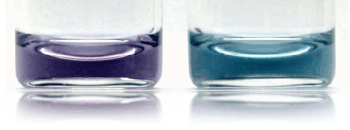21COE Programme: The Mechanical System Innovation Open Seminar 2007 will be held as follows.
Professor Tobias Hertel is a leading researcher in carbon nanotube science and engineering. In
particular, his excellent works in photoluminescence and ultra-fast spectroscopy are well recognized in
the field. Do not miss this chance to hear her talk in Tokyo. Participants from any departments or
outside of The University of Tokyo are welcome.
| Speaker : |
Professor Tobias Hertel
(Department of Physics and Astronomy & Vanderbilt, Institute of Nanoscale Science and Engineering (VINSE), Vanderbilt University) |
| Subject : |
Colorful Carbon: Photophysics of Carbon Nanotubes |
| Date : |
February 18, 2008 (Monday) 14:00-15:30 (Seminar room 2-31B, Faculty of Engineering bldg.2, Hongo campus)
Map: http://www.u-tokyo.ac.jp/campusmap/cam01_04_03_e.html |
| Outline : |
The extraordinary thermal-, chemical- and photostability of carbon nanotubes (CNTs) along with their
high molar photo-absorption coefficients, tunable nearinfrared luminescence and narrow spectral
features appear to furnish them with unique potential for a variety of applications in nano-, materialsand
life sciences. Most of these characteristics can be attributed to the strength of the graphitic CNT
backbone, its unique electronic structure and a quasi onedimensional geometry. Photoluminescence
quantum yields of semiconducting carbon nanotubes however, have long been believed to be
discouragingly low. Here I will discuss recent experimental and theoretical advances which have shed
light onto the microscopic mechanisms responsible for fast non-radiative decay. Until recently the
highest reported PL quantum yields were on the order of 10-4 to 10-3. Today PL quantum yields of
semiconducting CNTs exceed 3% and continue to increase with advances in sample processing. We
have used a combination of CW and time-resolved optical probes including time-correlated single
photon counting, pump-probe-, photoluminescence excitation-, and femtosecond time-resolved
photoelectron-spectroscopy to study the dynamics of optical excitations from the femtosecond to the
nanosecond timescale. The results underline the status of CNTs as unique optical material and their
potential for use in a manifold of optical applications from optoelectronics to use as fluorescent
markers in life-sciences.

|
|
|


